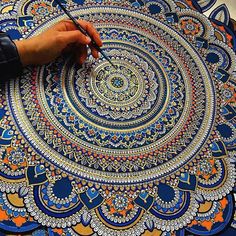Introduction: Rediscovering the Art of Coloring
For many of us, coloring recalls childhood memories filled with vivid crayons and boundless creativity. Yet, coloring particularly intricate mandala designs has captured adult attention for its therapeutic year effects in reces. Far from being just child’s play, mandala art coloring has proven psychological benefits that can help adults cope with stress, focus their minds, and reconnect with a sense of calm.
In this article, we explore why mandala coloring has gained popularity and how this simple, creative activity, backed by scientific research, can enhance mental well-being.
The Allure of Mandalas: An Ancient Design with Modern Appeal
Mandalas, circular designs composed of repeating patterns, have long symbolized unity and balance in cultures worldwide. Originating from Hinduism and Buddhism, these symmetrical patterns are historically used in meditation and spiritual practices. For centuries, the circular, harmonious shapes have symbolized the interconnectedness of life, serving as a visual pathway to tranquility.
But mandalas do more than simply offer a pleasing aesthetic. Research indicates that their symmetrical, repeating patterns create a psychological impact that calms the mind, alleviates anxiety, and promotes emotional balance.
The Science Behind Mandala Coloring and Its Psychological Benefits
1. Stress Reduction and Emotional Regulation
A pioneering 2005 study by psychologists Nancy A. Curry and Tim Kasser revealed that coloring structured designs like mandalas can significantly reduce anxiety. Participants who colored mandalas showed greater reductions in stress compared to those who engaged in unstructured coloring. Curry and Kasser proposed that structured coloring induces a “grounding” effect, promoting relaxation by gently steering the mind toward repetitive patterns (Curry & Kasser, 2005).
In essence, when we focus on coloring within a defined structure, we enter a meditative state akin to “mindfulness,” a psychological state where worries fade as we become fully immersed in the present moment. This mindful engagement has been linked to reductions in cortisol, the body’s primary stress hormone, leading to an overall sense of calm.
2. Improved Focus and Cognitive Function
Coloring mandalas offers a unique, dual benefit: it relaxes the mind while sharpening focus. Unlike unstructured drawing, mandalas require a mindful engagement with patterns and colors, which helps adults concentrate and improve attentional control. This effect was supported by a 2017 study published in the Journal of Occupational Therapy , which found that engaging in pattern-based coloring like mandalas improved cognitive performance, particularly among individuals struggling with focus (Holt et al., 2017).
For adults with busy, overstimulated minds, mandala coloring acts as a refreshing exercise in focus. It’s an ideal break from multitasking, encouraging a sustained attention span through simple, repetitive actions. Over time, this practice can even train the mind to maintain focus, improving productivity in other areas.
3. Emotional Uplift and Mood Enhancement
Coloring mandalas has been found to improve mood by stimulating the brain’s reward system. A 2018 study in Psychology of Aesthetics, Creativity, and the Arts examined how repetitive, creative activities, such as coloring, can boost dopamine production—the “feel-good” neurotransmitter that promotes happiness (Conner et al., 2018). This dopamine release can be especially beneficial for individuals coping with mild depression or those seeking a simple way to elevate their mood.
Moreover, mandala coloring offers a small, attainable sense of accomplishment. By choosing colors and completing designs, adults experience a form of instant gratification that positively impacts mood. Each finished mandala becomes a satisfying, visual reminder of their progress—a benefit sometimes lacking in daily life.
A Gateway to Mindfulness and Self-Care
Mindfulness is the practice of being fully present, and mandala coloring provides a direct route to this state without complex techniques. When coloring a mandala, the mind becomes immersed in the present, focusing on shapes and colors rather than external stressors. According to research in Mindfulness Journal (2016), simple repetitive activities like coloring mandalas increase gray matter density in areas of the brain linked to emotional regulation, suggesting that regular practice can support mental resilience (Tang et al., 2016).
Mandala coloring, therefore, becomes a valuable self-care tool. Its simplicity and accessibility make it an effective addition to a mindfulness routine, helping people reconnect with themselves amid the rush of daily life.
Personalizing Your Mandala Coloring Practice: A Beginner’s Guide
For those ready to incorporate mandala coloring into their self-care routine, a few simple steps can help maximize the benefits:
- Choose Your Materials Carefully : Invest in quality colored pencils or gel pens for more control and vibrant colors.
- Create a Calming Space : A quiet, comfortable area free of distractions can enhance focus and relaxation.
- Set Aside Time : Dedicating 15-30 minutes daily or weekly can make mandala coloring an enriching habit.
- Allow Creative Freedom : Color choice is a part of the therapy; Allow yourself to experiment with colors and combinations that feel right for you.
Conclusion: Embrace the Benefits of Mandala Coloring for Mind and Soul
Mandala coloring is much more than an aesthetic activity; it’s a research-backed approach to improving mental well-being. From reducing stress and enhancing focus to lifting mood and promoting mindfulness, the benefits are far-reaching and accessible to all.
The next time you need a mindful escape, consider coloring a mandala. You’ll not only find joy in the creative process but also discover an unexpected path to mental clarity and inner calm. In today’s fast-paced world, something as simple as adding color to a page might just be the key to balancing your mind, one shade at a time.


































